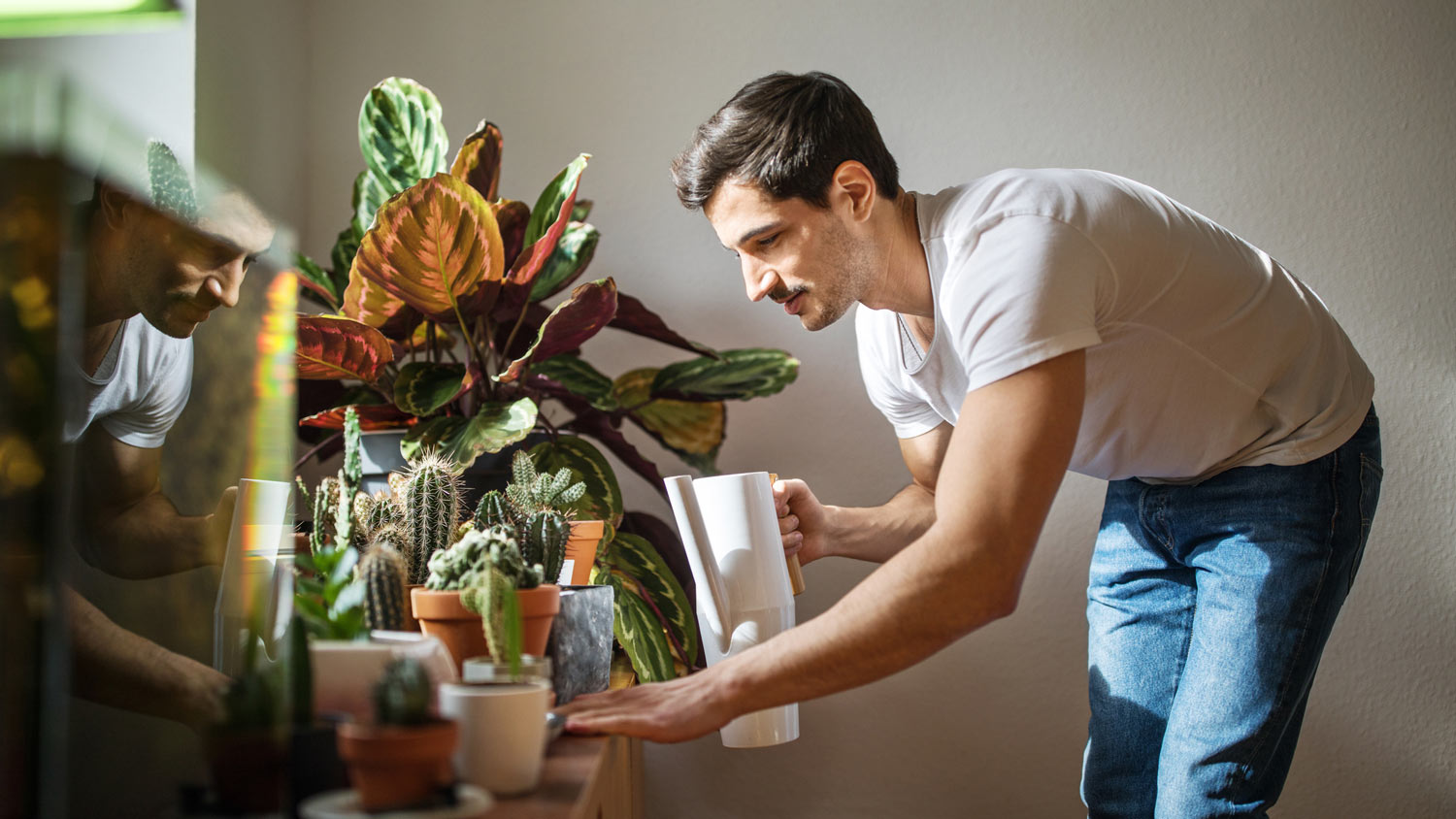
Wondering how much it costs to remove an acoustic ceiling? Get cost estimates, key factors, and expert tips to help you plan your ceiling update.
Don’t get stuck with wilting plant cuttings


Your living room finally feels like a cozy hangout spot, but there’s something missing in one corner. You’ve already got a blanket ladder and plush armchair, so what else can you add to fill that missing piece? A trendy Monstera deliciosa or perhaps a fiddle leaf fig would be perfect, but these beauties aren’t always easy to come across at local nurseries, depending on your location.
So if you’re wondering how to order plants online, follow these tips to ensure your leafy friends arrive in good health.
The number of online plant retailers is growing rapidly, and some experts predict online houseplant sales may grow past $700 million per year. But with social media drawing attention to unique plants, you won’t be alone in your hunt for the perfect philodendron.
Plus, when you order plants online, they aren’t likely to ship until it’s their prime growing season or the threat of frost during shipping passes. Order early to secure your dream plants, or they might be sold out by the time to start planting comes.
Failing to plan for the hardiness zone is planning to fail in the garden. For plants that will go outside, you need to know your plant hardiness zone, which will determine what plants will grow best in your location.
When shopping online, you have access to a huge variety of plants you won’t find in your local nurseries. That’s because nurseries often carry what grows in your region.
A drought-resistant succulent won’t fare well if you live in northern Michigan, and thirsty plants will struggle if you live in the southwest. Understanding the hardiness zone is key to helping your home garden thrive.

No matter where you plan to place your plant, you should also understand its light and water needs. Some plants have leaves that will yellow if they receive direct sunlight, while other plants will die without such bright light.
Ferns love moist soil, but overwatering is a quick death for cacti. For humidity-loving plants, like fiddle leaf figs, you may need to mist their leaves to keep them perked up and healthy. Knowing these traits will help you best care for indoor plants and outdoor species.
When you go to a local nursery, you can easily see which plants are matured in pots and which plants are just young cuttings.
But online, this information can be harder to come by, as retailer images often show what the plant looks like in full bloom or maturity. Take a close look at the product descriptions to find out how the plant will arrive.
Potted: The plant arrives in a growing pot, typically made of plastic. Some retailers will even plant your purchase in a ready-to-display ceramic pot.
Bare root: This plant has nothing surrounding the root or soil and will need to be planted as soon as it arrives to your door.
Wrapped soil: The soil and roots are wrapped in plastic, bubble wrap, paper, or cloth.
Cuttings: The product photo shows a string of pearls so long it wraps a bookshelf, but you might receive a 2-inch cutting. Take note of the age and size of the plant before purchasing.
Seeds: Some products don’t make it very clear that they are seeds rather than a plant ready to pot or go in the ground. Read closely to make sure you’re buying a plant and not its seeds.
You probably wouldn’t order from a restaurant or buy a laptop online without checking out what people are saying first. Plants can be expensive, especially for unique or large varieties, so do your due diligence in ensuring the company is trustworthy and customers are happy with their purchases.
Check out the company’s reviews to learn more about its customer service. Does the company offer refunds? How do they ship these delicate items? Will the team help you troubleshoot your wilting plants?
And even if a company is reliable, there may always be a few duds on its virtual shelves. Read product reviews to get an idea of how the plant will look when it arrives.
You order your plants, wait weeks for their arrival, and they show up with broken stems and yellow leaves. Or maybe the snake plant you thought you ordered turns out to be a peace lily. Sometimes, you might need to return a product, and you want to find a company with a return policy you like.
Review the return policy closely. Some companies may not allow returns at all, some may require you to pay for shipping the unwanted plants, and some may offer a refund to your card, while others only offer store credit.

Plants are fragile, so retailers will need to package and ship them carefully. While shipping rates can vary depending on the company and even the product, expect to pay at least a flat rate for shipping. If you order a plant during its growing season or buy a bare-root plant, consider paying extra for expedited shipping so you can get it planted as soon as possible.
There’s a bare, 1-foot wide spot in your garden perfect for an aloe vera plant, but the plant that comes in the mail is 3-feet wide. Measure the garden space or pot you want to buy a plant for, then check the measurements on the website.
Products will likely show a range of sizes since each plant will vary slightly. When in doubt, chat or call a customer service representative for advice.
From average costs to expert advice, get all the answers you need to get your job done.

Wondering how much it costs to remove an acoustic ceiling? Get cost estimates, key factors, and expert tips to help you plan your ceiling update.

Discover the average feng shui consultant cost, what impacts pricing, and how to save on your consultation.

Discover the cost to design a bathroom, including key price factors, to help you plan your remodel with confidence and avoid budget surprises.

Create a stunning and functional home or remodel with an interior designer. Follow these common interior design questions to prepare for working with a pro.

Discover the average cost of stretch ceiling installation, key price factors, and ways to save. Get transparent pricing to plan your stretch ceiling project.

Reinvigorate your home with the summer-ready decor trends welcoming us into the sunniest days of 2025. Find your favorite among these top 10.